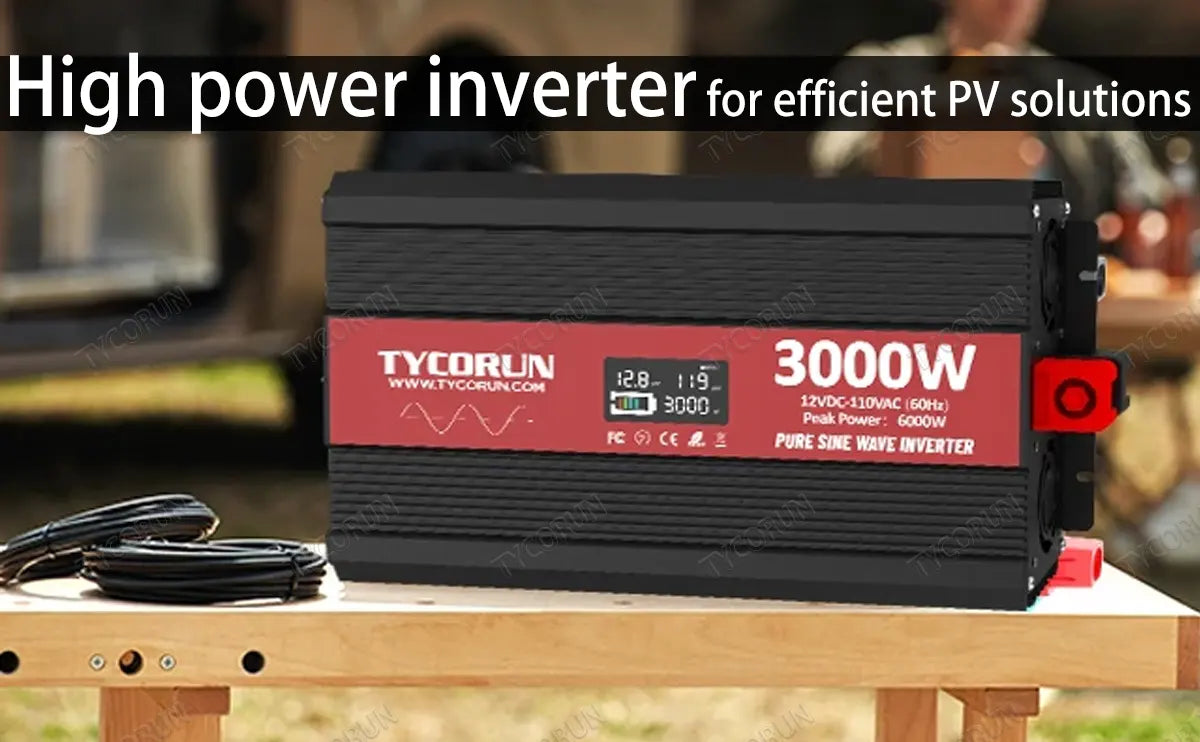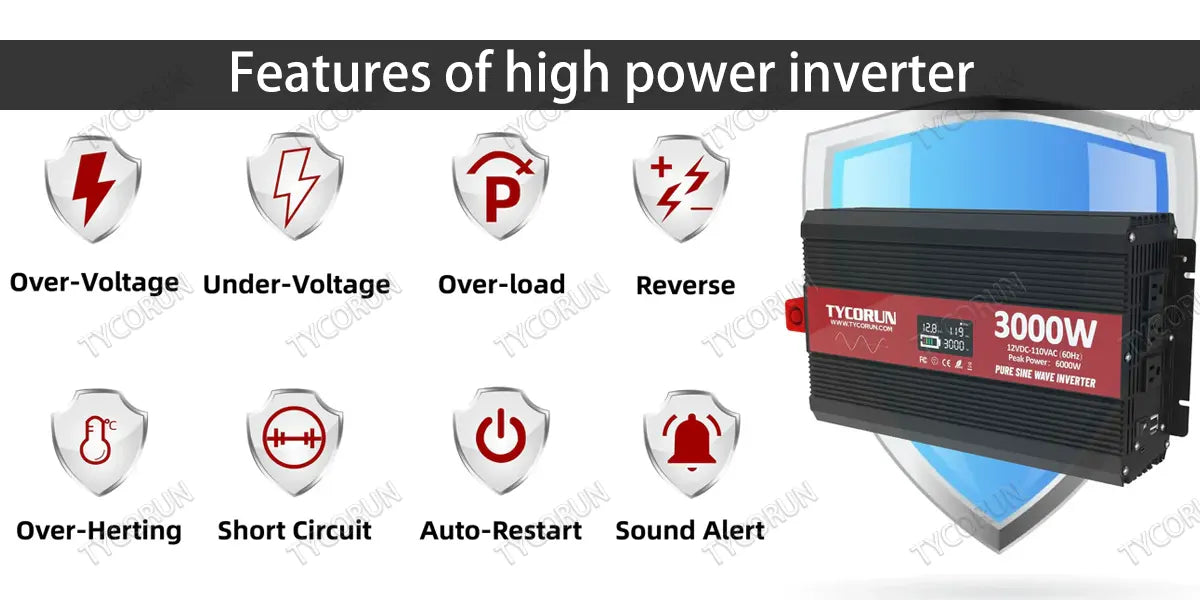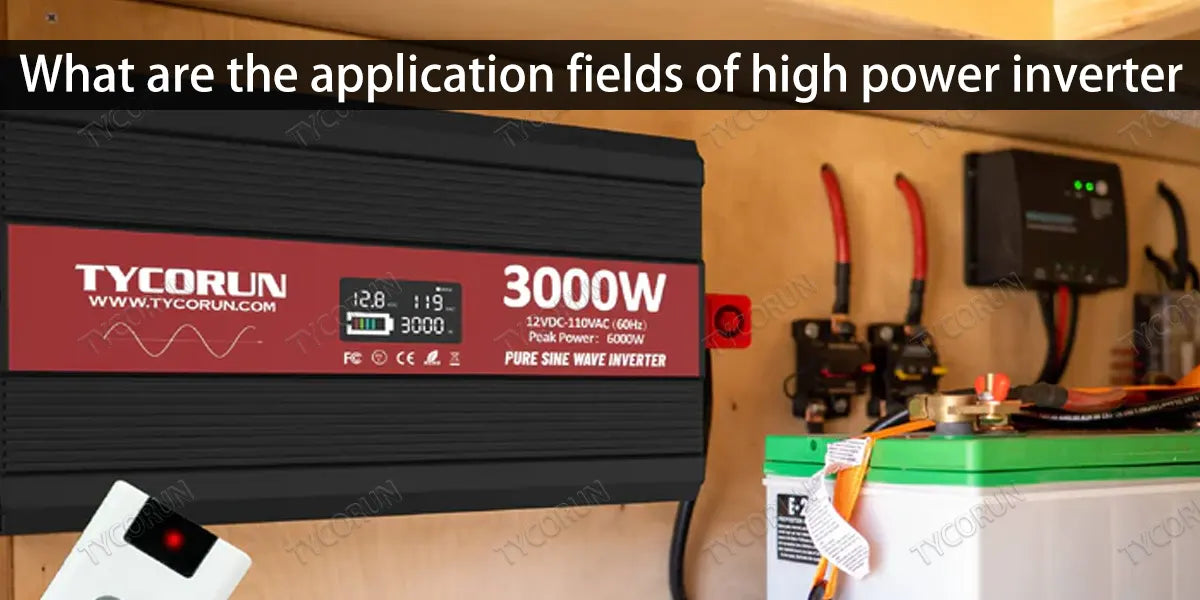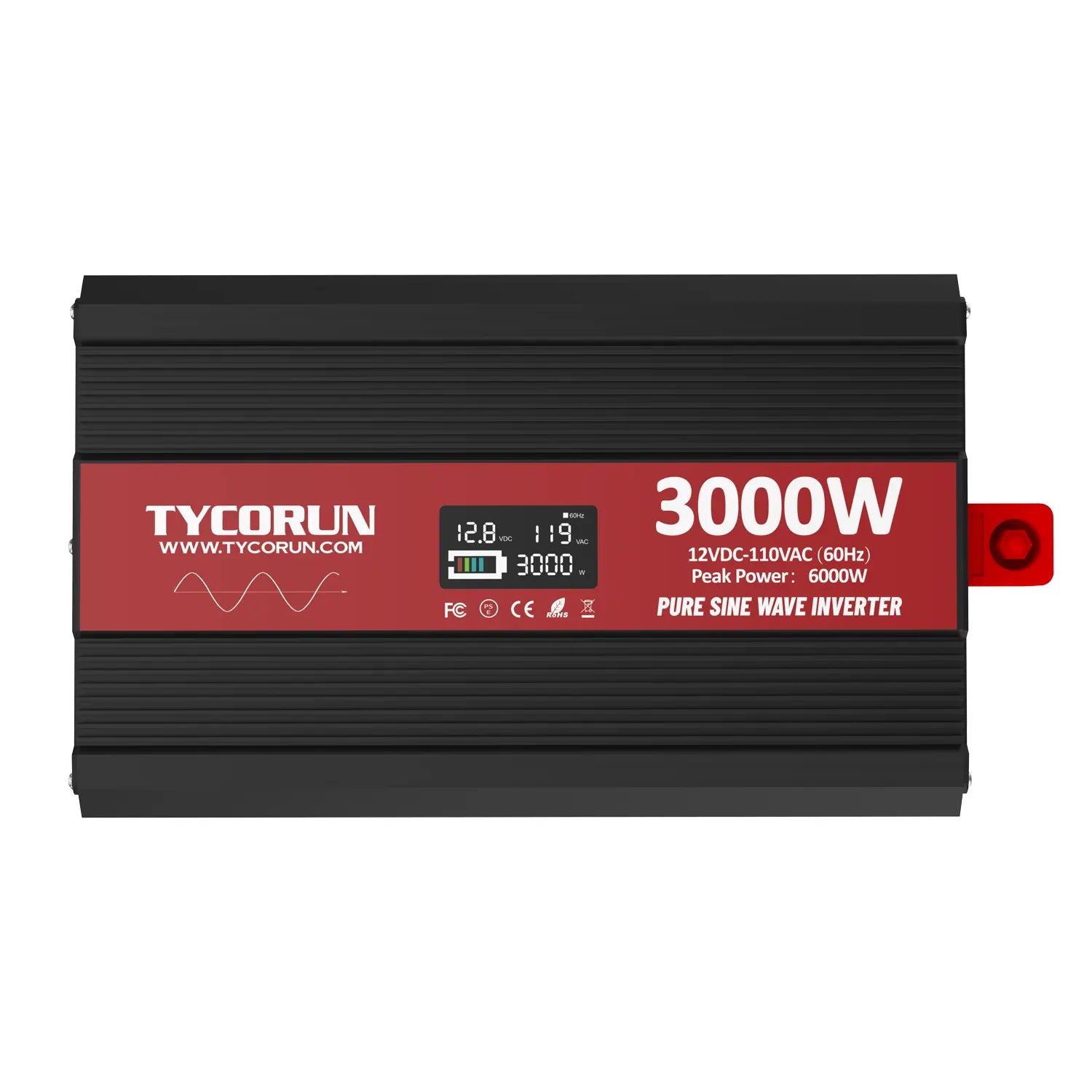
Main content:
With electricity consumption rising year by year and the call to reduce greenhouse gas emissions, the new energy industry is developing at an unprecedented rate. Among them, solar energy is attracting more and more attention due to the characteristics of easy access.
However, high efficiency solar panels occupy a relatively large area, and if you need high power grid-connected power generation, you can only rely on the construction of high power photovoltaic power stations. High power inverter, which is its core components, has also developed rapidly.
1. Introduction of high power inverter
The high power inverter consists of an inverter system and a built-in solar charge controller. The inverter works first, and the inverter stops after the battery is under voltage. An inverter is an electronic component that converts direct current into alternating current.
Ordinary inverters are suitable for low-power occasions, while high power inverter is mainly used in high power occasions such as high frequency and high voltage. The advent of high power inverter allows better control and application of high power equipment powered by DC power supplies.
2. The principle of a high power inverter
The direct current generated by the solar panel array is transmitted to the grid through the power inverter 3000w to meet the specified grid indicators. The amount of electricity fed to the grid by the inverter is determined by the PV array power and the local sunshine conditions at the time.
In addition to the basic function of converting the direct current generated by the solar panel into alternating current at a specific voltage and frequency, the inverter has the basic function of converting it. It must also have MPPT (Maximum Power Point Tracking) to reliably monitor grid disturbances and disconnect from the grid in the event of grid failure.
click the picture to know more about power inverter 3000w
The high power inverter is a multi-level inverter, which works by adding multiple energy-controlled silicon tubes to the DC circuit to convert DC power into a multi-stage AC power supply, and the AC output waveform is closer to the sine wave. Multistage inverters have been widely used due to their high output voltage, excellent waveform and low energy consumption.
3. How the high power inverter works
On the one hand, the adjusted electrical energy is sent to the inverter system, and on the other hand, the excess electrical energy is sent to the battery, which is automatically charged. When solar power is not enough to meet the load demand, the controller sends power from the battery to the inverter system.
The controller has the function of sufficient protection for the battery and discharge undervoltage protection. After the battery is under voltage, it stops the power inverter 2000 and automatically switches to the mains power mode, which supplies power to the load.
At the same time, the mains power is automatically charged with solar energy after rectifier modulation, and the battery voltage is increased and then switched to the inverter power supply mode to cut off the mains power.
4. Composition of a high power inverter
The high power inverter is mainly composed of three parts: power module, control module and inverter output module. The power module is used to provide DC power, the control module is used to control the inverter switch, and the inverter output module converts DC power into AC power output.
Most of the high power inverters are grid-connected, and the circuit topology is basically a three-phase full-bridge. From the topology, it can be seen that the loss of the whole inverter mainly comes from the IGBT module and transformer, so choosing the inverter IGBT module to improve the efficiency of the inverter has become a research hotspot.
5. Features of high power inverter
The input voltage, current, and power of high power inverters are much larger than those of ordinary inverters, so there are some special requirements in design and use.

- High stability requirements
The high power inverters require a stable AC output voltage. Therefore, it is necessary to use high-quality switching devices and transformers, and add overvoltage and overcurrent protection loops to ensure the stability and safety of the inverter.
- High output voltage
The high power inverters usually output an AC voltage of 220V or higher. Therefore, it is necessary to use high-voltage switching devices and high-voltage transformers, and at the same time, it is necessary to add a voltage regulation loop to ensure the stability of the output voltage.
- High heat dissipation
It requirements high power inverters have more power, so they generate more heat when working. In order to ensure its reliability and working life, it is necessary to use high-efficiency heat sinks to improve heat dissipation efficiency. Precise control is required high power inverters require precise control, which can be achieved by adding control technologies such as PID control loops and DSP controllers.
6. What are the application fields of high power inverter
- Energy storage field
High power inverters are widely used in the field of energy storage. Due to its high efficiency and good stability, it has been used in large-scale battery energy storage systems, drones and other equipment.
- Transportation
It is widely used in locomotives, electric vehicles and other means of transportation to provide a more convenient way of energy output. At the same time, high power inverters can also be converted by photovoltaic panels, wind turbines and other equipment, so that they can be better used in various vehicles.

- Aviation
It is mainly used in aircraft, manned drones and other equipment to provide them with a more reliable way of power output. Due to the high requirements for energy reliability and stability of aviation equipment, high power inverters have broad application prospects in this field.
In short, the emergence of high power inverters has enabled many high power devices to be better used in modern society, and its application field will continue to expand and deepen.
7. Conclusion
In summary, inverters are an integral part of modern electronic devices. Efficiency is one of the most important indicators to evaluate PV inverters, and the topology of high power PV inverters is almost always three-phase full bridge, and efficiency improvement is mainly achieved by reducing the loss of IGBT modules, which is particularly important for improving the efficiency of inverters.
In the field of application of high power inverter, it has the characteristics of high stability requirements, high output voltage, high heat dissipation requirements, and precise control requirements.
Related articles: top 10 inverter IGBT companies, top 10 solar inverters, inverter switch
